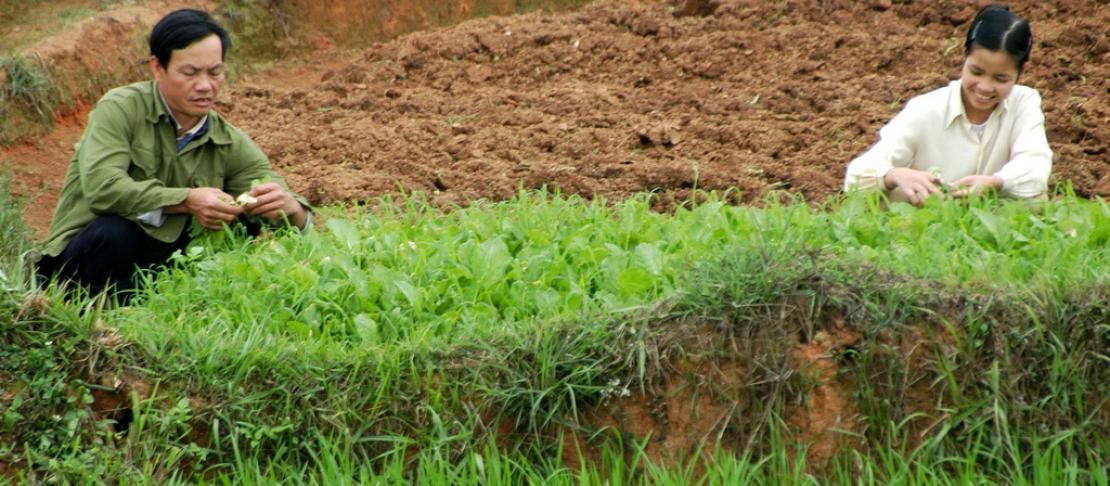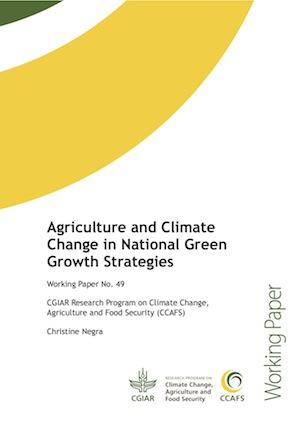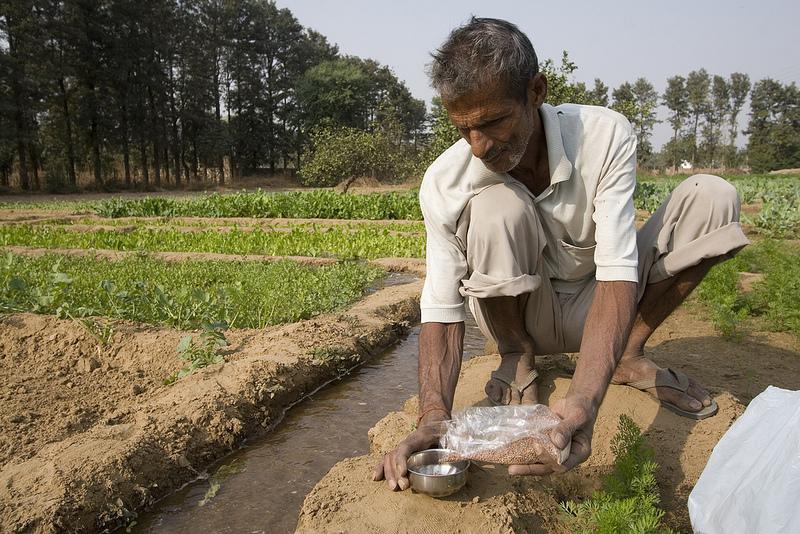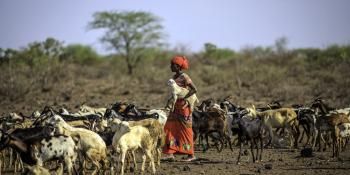Bringing agriculture into the center of national Green Growth strategies

The Green Growth concept is being tested in countries around the world as a way to achieve both socio-economic progress and environmental conservation. In its 2012 report “Achieving Food Security in the Face of Climate Change,” the Commission on Sustainable Agriculture and Climate Change recommended making sustainable, climate-friendly agriculture central to Green Growth.
Now a report from our Working Paper series, “Agriculture and Climate Change in National Green Growth Strategies” has reviewed Green Growth policy actions related to agriculture and climate change in eight countries: Mexico, Vietnam, Rwanda, India, South Korea, China, France and Australia. The paper assesses progress and challenges while also investigating what impact the 2007-2008 financial crisis had on the countries’ Green Growth developments.
Where does ‘Green Growth’ come from?
 The concept of Green Growth has been evolving on the world stage through major international meetings in the 1970s and 1980s, the Brundtland Commission report (1987) and the 1992 Rio Earth Summit. Following the global financial crisis of 2007-2008, enthusiasm has grown among national and global leaders for Green Growth as a route to economic recovery and advancement through sustainable, low-carbon development.
The concept of Green Growth has been evolving on the world stage through major international meetings in the 1970s and 1980s, the Brundtland Commission report (1987) and the 1992 Rio Earth Summit. Following the global financial crisis of 2007-2008, enthusiasm has grown among national and global leaders for Green Growth as a route to economic recovery and advancement through sustainable, low-carbon development.
A growing number of countries are developing national Green Growth strategies. They range from scoping studies to policy documents to prioritized action plans and make use of an array of institutional arrangements for coordinating across ministries and engaging stakeholders.
The report clarifies that putting the concept of "Green Growth" into practice may mean different things in different places. That said, as countries move from concept to action on Green Growth, they generally begin by designing policies, making these policies official and setting up institutional and financial implementation mechanisms. As policies begin to take effect, they monitor results on the ground and make course corrections.
There are many ways to prioritize agriculture in national Green Growth strategies:
Governments and others can invest in research and development and education for agricultural best practices, develop environmental accounts and enforce farmers' rights to land and other productive assets. Working toward accurate signals of natural resource scarcity in agricultural markets and appropriate rewards for uptake of sustainable practices is key. As is using resources more efficiently across supply chains, and increasing resilience to climate change and other sources of volatility.
The countries investigated in the report have made real progress towards an agriculture-related green growth path.
Mexico took a lead role in green policy when its 2012 General Law on Climate Change confirmed a 30% GHG reduction target by 2020 and established a voluntary emissions trading system. India's 2008 National Action Plan on Climate Change guides climate change adaptation and mitigation including sustainable agriculture, forest cover, water supply, habitat conservation and strategic knowledge and the National Land Records Modernization Program will improve efficiency and public access.

INdia's Action Plan on Climate Change includes references to sustainable agriculture and water supply. Photo: ILO
Beginning in 2007, China has put forward a series of climate change initiatives, including goals for a 21.6% increase in forest cover, and the Green Development Index reports on carrying capacity, influence of economic growth and policy support related to environment and resources. And Australia made an early investment with its 1998 Greenhouse Office, the first in the world, and the Carbon Farming Initiative issues carbon credits for voluntary, land-based GHG emissions offsets and assists farmers with the costs of increasing efficiency and climate change adaptation.
Financial crisis pushed countries to step-up their Green Growth game
The report finds that for some countries, the global financial crisis of 2007- 2008 acted as a bit of a wake-up call to the opportunity presented by Green Growth approaches for economic recovery along a sustainable, low-carbon development path, and thus the crisis actually amplified uptake of Green Growth approaches to socio-economic development.
Now Rwanda is integrating policies for climate mitigation and adaptation, soil fertility management, agroforestry, irrigation infrastructure and road networks that enable food transport through its 2011 National Strategy on Climate Change and Low Carbon Development.

As a response to the financial crisis, Rwanda is now integrating agroforesty, and soil fertility management in its National Strategy on Climate Change and Low Carbon Development. Photo: N. Palmer
By 2008, Vietnam had developed a National Target Program to Respond to Climate Change that set out a green research, development and communication strategy in agriculture, industry and energy. Its 2012 National Green Growth Strategy (2012) charts a course to a low carbon economy.
The future for Green Growth
Following the Rio+20 Earth Summit, the United Nations is convening a major international policy process focused on the post-2015 development agenda. While a global framework is still evolving, national-level innovation and action will continue to be essential for testing the Green Growth concept through context-specific policies and projects.
As national Green Growth strategies evolve into on-the-ground practice, robust investment in climate-smart agriculture will be essential to achieving real sustainability.
Download the Working Paper: “Agriculture and Climate Change in National Green Growth Strategies”, written by: Christine Negra. CCAFS Working Paper No. 49. Copenhagen, Denmark: CGIAR Research Program on Climate Change, Agriculture and Food Security (CCAFS).



